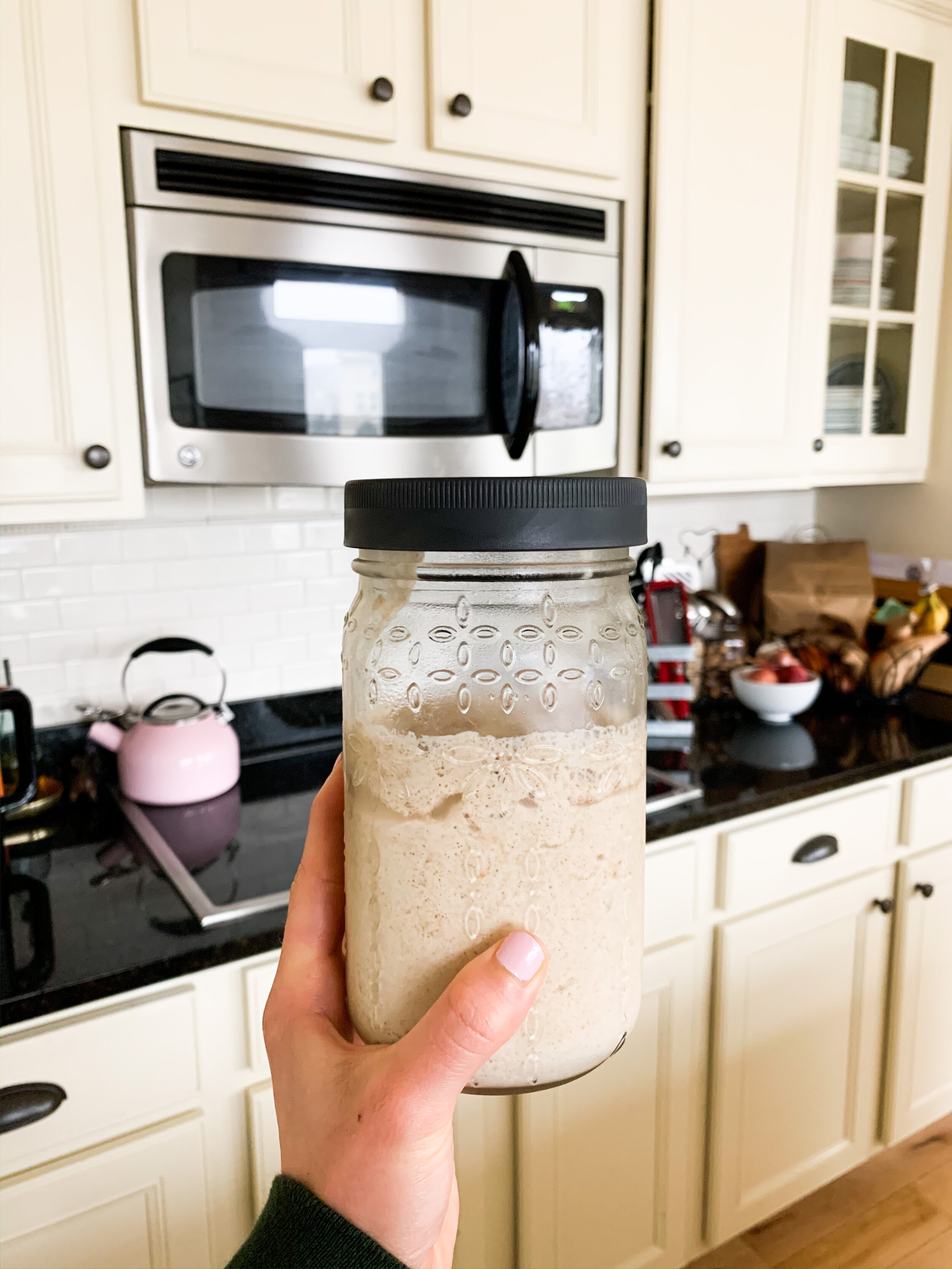Kissing something loaded with delicious potential goodbye brings me the pain every cook knows. I refused to make sourdough for so long because the discarding seemed so wasteful (and I’m not the only baker who feels this way), until I did the math correctly and calculated that, actually, there is no need to throw starter in the trash everyday. “Discard” is the wrong word to use to explain the process of caring for a sourdough starter. There is nothing bad or dead about your starter to necessitate tossing half in the bin. The purpose of this discard is to prevent your starter from growing and growing and growing until it fills every nook and cranny in your kitchen because that would be… stinky and sticky. But, there is another way to control the starter’s growth without wasting half of it.
So, what should you do with it? What’s a more sustainable and practical way to feed, maintain, and utilize your starter everyday?
Once your starter is active and bubbly - after about five days of development - begin separating it, not discarding it. Everyday (or 1-2x/week if yours is refrigerated), you’ll feed the starter equal parts flour and water. It will immediately grow due to the added flour and water, and then after a few hours, it will bubble and grow even more. This is when separation (previously known as “discard”) becomes essential so that your starter doesn’t ooze out of its storage container, or so that you don’t need to construct a giant sourdough starter storage container.
Here’s how I do it.
Daily:
Feed the starter equal parts flour and water. Depending on how much starter I want - considering the recipes I have planned in the coming week or two - I will feed it anywhere from 50-100 grams each of flour and water.
Stir well, cover, and let the starter begin to bubble for the next 2-3 hours. When I notice bubbles forming a thick layer on the surface (this is easy to monitor through a 16-32 oz. glass mason jar), I separate a portion of the starter and transfer this to another storage container. OR, I’ve also separated the starter into two separate jars before feeding, then fed both of them in their individual jars the same way I always would - equal parts flour and water.
Now, both containers have been fed and will continue to be fed on the same schedule. For example, I began feeding my starter at 12 PM daily. When it grew significantly (and once it did actually ooze out of its container - oops!), I waited a few hours and separated half of this starter into another jar.
At this point, I can place one or both of the jars in the fridge to slow the growth and fermentation, and to give myself time to take a break if I don’t want to feed it regularly everyday for a certain amount of time. If I choose to refrigerate, I’ll want to plan ahead - a few days before I want to make something with the starter, I’ll take it out of the fridge and resume the regular feeding schedule as I did before to ensure reactivation.
As long as it’s fed regularly and kept in optimal living conditions, a sourdough starter will not lose its flavor or its power. Keep it alive, keep making bread, and don’t be afraid to venture out of the bread neighborhood with recipes like pizza crusts, biscuits, English muffins, pretzels, cinnamon rolls, and more. Your starter has so much potential! For more recipe inspiration, follow my Sourdough Tips and Recipes Pinterest board.


